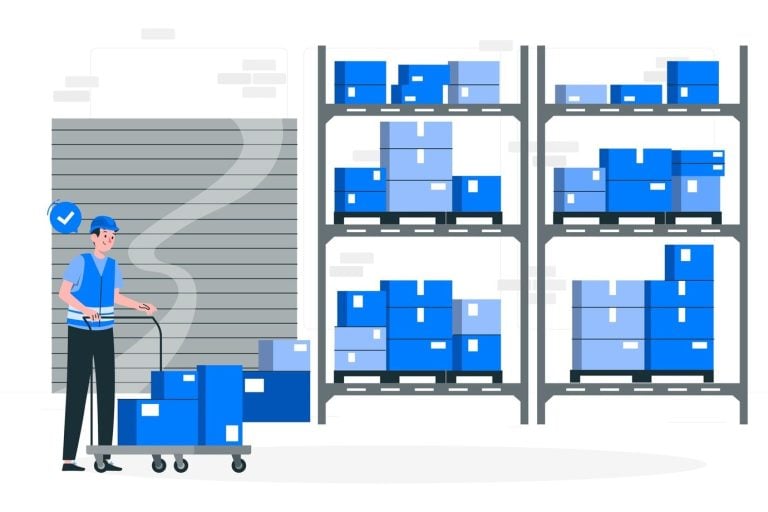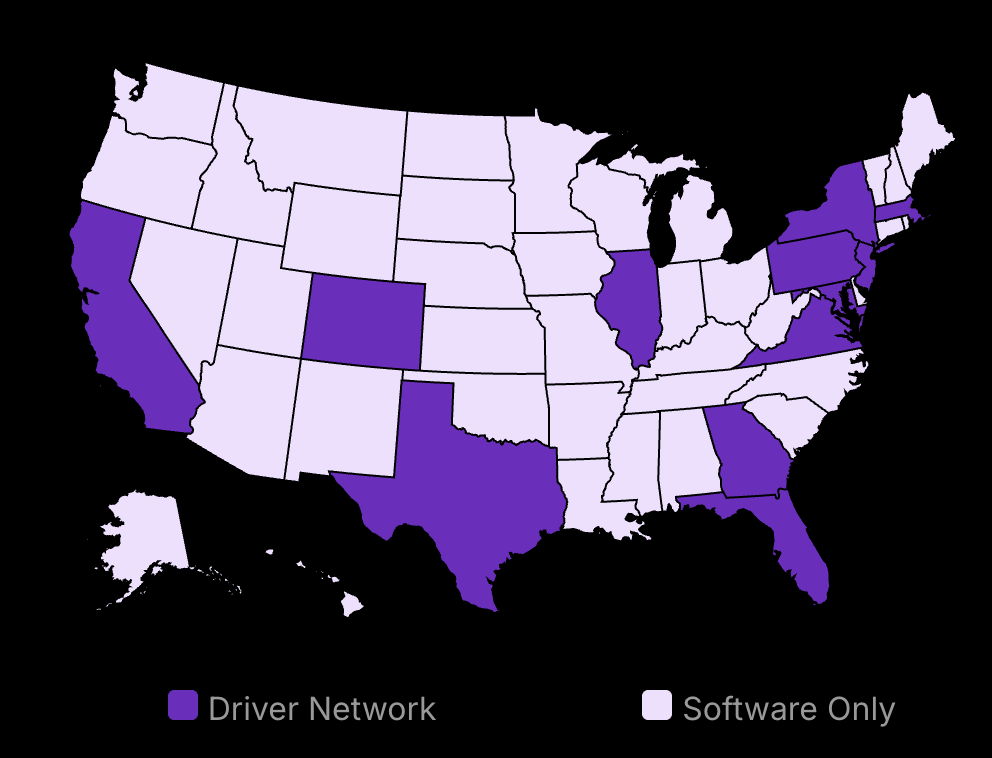Small business owners know the truth about product sourcing in 2025: finding reliable wholesale distributors who won’t drain your budget feels like searching for water in a desert. Every dollar counts when you’re building your inventory, yet quality can’t be compromised.
The vendor landscape has changed dramatically. Online wholesale marketplaces have exploded. Trade shows have transformed. And most importantly, the power balance has shifted toward small businesses willing to look beyond traditional sourcing methods.
The question isn’t whether affordable vendors for small businesses exist—they absolutely do. The real question is: do you know how to find them before your competitors do?
In this comprehensive guide, we’ll examine the top manufacturers and vendors for small businesses in 2025, focusing specifically on those offering more affordable pricing and products without sacrificing quality. We’ll share concrete strategies that have helped thousands of small businesses cut their product costs by an average of 22% while maintaining or even improving quality standards.
Whether you’re launching a new business or trying to improve your existing product photography supply chain, the strategies in this guide will give you the advantage you need in today’s competitive market.

27% higher customer satisfaction
Professional delivery features:
- Real-time GPS tracking
- Automated ETA updates
- Delivery confirmation photos
- 27% higher delivery satisfaction
Identify Affordable Wholesale Suppliers Today
Online databases make supplier search easy.
Trade shows are great for face-to-face meetings.
Associations can share exclusive supplier deals.
Finding the right suppliers is crucial for small businesses and retailers to sell goods and buy products efficiently. There are many steps to make this process successful.
Step 1: Use Online Platforms Effectively
Online platforms are key when looking for wholesale products and suppliers for online stores. They offer retailers a wide range of options, making them invaluable for small businesses wanting to know where stores get products they sell.
It is better to start with well-known platforms like Alibaba and ThomasNet. Alibaba is a global marketplace where you can connect with suppliers and manufacturers from different styles and various industries. It’s widely used for international trade and you can find many products. ThomasNet, on the other hand, focuses more on North American suppliers and manufacturing, which might be better if you want suppliers closer to home.
While browsing these platforms, examine supplier reviews and ratings closely. These insights provide a glimpse into supplier reliability. Be wary of suppliers with negative reviews or low ratings, as these could be red flags. The feedback often reflects issues like delays in shipping time, poor communication, or product quality defects. This can save you from dealing with unreliable suppliers later.
You shouldn’t skip comparing minimum order quantities (MOQ) and pricing. This ensures you aren’t tied into large or costly orders. MOQ refers to the smallest order size a supplier can accept. Some suppliers might have high MOQs that don’t fit your budget. Look for wholesale suppliers with low MOQs that allow you to test the waters without a major outlay. Evaluate all the information and pricing terms carefully, keeping an eye out for any hidden fees or charges that might surprise you.
Step 2: Maximize Trade Show Opportunities
Trade shows are perfect for meeting wholesalers, suppliers, and manufacturers in person. They’re events where businesses showcase and sell their products, allowing potential buyers to inspect and discuss products face-to-face.
First, research to find trade shows related to your industry. This increases the chances of finding suppliers to sell products that match your business needs. Once identified, plan your attendance well in advance. Register early to secure your spot, as they often reach capacity quickly.
Prepare questions for suppliers you’ll meet. Consider asking about product quality, delivery times, and flexibility with orders. This can help you filter viable suppliers from those who don’t meet your criteria. Also, bring business cards and materials that outline your business. This ensures you leave a lasting impression.
After the trade show, categorically follow up with promising contacts. A simple call or email can keep the dialogue open. Thank them for their time and express your potential interest. This step is crucial to forming strong business relationships. Keep all collected supplier information handy for future reference in case there are changes in your business needs.
Step 3: Build Relationships with Industry Associations
Industry associations connect businesses with valuable suppliers and resources for new customers. Being a member often grants access to exclusive supplier directories and distributor networks that are not available to other businesses or the general public.
You can start by identifying associations within your sector. These groups often hold meetings or networking events that can be rich in sourcing insights. Joining these groups gives you the chance to meet seasoned professionals from other businesses who can share their supplier experiences.
Participate actively in association events. Attend meetings, webinars, and conferences. Engage with other members and don’t hesitate to share your business needs. These interactions may lead to supplier recommendations specifically tailored to your niche.
Associations also publish newsletters and reports highlighting trusted suppliers. These resources can point you toward suppliers with a proven track record in your industry.
Best Value Products for Small Businesses
Prioritize suppliers offering the best value, not just the cheapest price.
Bulk deals on popular items can save money in the long run.
Track market trends to manage inventory wisely.
Evaluate Supplier Deals for Cost-effectiveness
Long-term savings should be top of mind when evaluating supplier deals. Buying merchandise in bulk is an effective strategy to reduce costs over time. However, it’s essential to ensure that these bulk purchases align with your business needs. Often, businesses stock up on inventory without considering changing market demands.
Checking the payment terms and conditions offered by suppliers is crucial. Flexible payment terms allow for better cash flow management, offering businesses breathing room when needed. Compare payment terms across suppliers to find the most advantageous options. Look for deals with generous return policies and warranties. They ensure that risks remain low, giving you peace of mind. Supplier reputations can offer insights into how they handle customer service and product guarantees.
Align Products with Market Demands
Staying attuned to market trends is essential for maintaining a competitive edge. Sales data analysis is vital, revealing which products are currently in demand by consumers, top wholesale buyers, distributors, and suppliers, thus guiding your inventory decisions. For example, an uptick in demand for eco-friendly products can direct your sourcing strategies toward suppliers who offer sustainable options.
Adjusting product offerings based on insights will save costs and increase sales. For instance, as new data reveals trending items, like eco-friendly cleaning and pet supplies, your inventory should reflect this interest to remain competitive. Suppliers can be a valuable source of future predictions. Regular communication can provide insights into upcoming trends, helping you stay ahead.
Navigate the World of Wholesale Suppliers
Finding reliable wholesale suppliers is a concern for many small businesses. Online platforms and trade shows are common sources for wholesale trade. Platforms like Alibaba and ThomasNet are popular for connecting with wholesale suppliers. Identifying the right supplier for your merchandise requires some due diligence. You may need to verify reviews, order minimums, and order amounts, and even request samples to ensure quality.
Cost-Effective Sourcing Strategies

Use peer networks for vendor recommendations.
Prioritize research and negotiation to reduce costs.
Build strong relationships for long-term savings.
Use Peer Networks for Vendor Recommendations
Finding top-notch vendors for small business depends heavily on recommendations from peers. Leveraging personal networks can provide insights that reviews can’t.
Join Business Groups and Forums:
Start by joining business groups and online forums. Platforms like LinkedIn and Facebook host many dedicated groups where professionals share their experiences with different vendors. This is where you’ll get honest, unvarnished opinions about suppliers’ performances.Seek Personal Experiences from Trusted Connections:
Conversations with colleagues and peers in your industry can be valuable. Ask them directly about the vendors they’ve engaged with. Hearing about their experiences can help you avoid unreliable suppliers. Remember, 52% of small businesses cite referrals as their top source for new ventures, underlining their importance.Prioritize Vendors for Small Business with Consistent Performance Records:
Always look for suppliers who have a history of stability and reliability. Track their performance records over time. Examine their delivery punctuality, product quality, and any reviews you can find, even if these reviews are informal. Consistent performance is often a positive indicator of future reliability. With 86% of business purchases influenced by word-of-mouth, it hardly makes sense to ignore these powerful tools.
Implement Strong Negotiation Techniques
Proper negotiation can save significant costs and foster better vendor relationships.
Prepare with Market Research:
Before entering any discussions, gather market data on pricing norms and the reputations of vendors. This equips you with the leverage you need to discuss terms that benefit your business. Market research sets a firm groundwork for negotiations.Maintain an Ongoing Dialogue for Potential Discounts:
You shouldn’t hesitate to ask for discounts or better terms. Establish a communication line where you periodically check in to inquire about special deals or upcoming sales. Keeping communication lines open can lead to ongoing savings.Offer Incentives for Better Deals:
Consider offering something beneficial to your vendors, like a large deposit. This might motivate them to offer you reduced prices or favorable payment terms. Offering a large deposit can be persuasive, as it takes some of the risk off the vendor.Build Long-Term Relationships for Mutual Benefits:
Aim to develop lasting partnerships with your suppliers. Long-standing partnerships often result in more favorable terms, as vendors are keen to reward loyalty. This also allows for discussions that cater to both parties’ needs, ensuring a balanced arrangement.
Leveraging Technology in Negotiation
Using digital tools can streamline communication with suppliers, reducing unnecessary time spent in back-and-forth exchanges. Efficient communication is critical, as shown by the fact that 37% of procurement teams waste time seeking updates or corrections. Consider platforms designed to enhance vendor relationships.
Understanding this foundation is essential, as small businesses move forward. The strategies described will prepare companies to establish successful vendor partnerships, ensuring cost-effective procurement.
Small Business Vendor Partnerships for 2025 and Beyond

Discover digital tools and platforms streamlining sourcing.
Prioritize sustainable practices to attract eco-conscious buyers.
Enhance supply chains through cutting-edge technology.
Digital Marketplaces Simplifying Sourcing
Digital marketplaces continue transforming sourcing. These platforms offer a range of tools that serve specific niches. For instance, some cater to emergent markets or specialize in certain products, such as electronics or apparel. Knowing each platform’s strengths helps select one best suited for your business needs. Leveraging platforms like Faire, which focuses on small business needs, can provide an edge.
Virtual trade shows are another trend gaining ground. They break geographical barriers, offering small businesses access to a global pool of suppliers. Lower costs and reduced time commitments make virtual events appealing, particularly for budget lead time-conscious firms. This format enables businesses to explore diverse suppliers and make informed decisions without leaving their offices.
However, increased digital platforms foster competition in other marketplaces. To stand out, marketplaces innovate by offering seamless integration, personalized services, and efficient customer support. This competitive climate benefits business with improved services and better pricing models, aligning with the growing expectations of top wholesale suppliers and buyers of digital-first B2B strategies.
Shift Towards Sustainable Products
Sustainability in business is no longer optional—it’s imperative. This shift is fueled by increasingly eco-conscious consumers. Businesses now seek out vendor partnerships with a keen focus on sustainability. Vendors that demonstrate clear, actionable sustainability agendas often gain preference. Look for those reducing carbon footprints or implementing circular economy models.
Sourcing green-friendly products not only aligns with consumer interests, but also offers long-term supply chain resilience for profit businesses worldwide brands. Vendors using ecological materials reduce environmental impact, fostering positive perceptions of worldwide brands among customers.
Technology Enhancing Supply Chain Operations
Advanced technology is redefining supply chain management. Tools that optimize supplier management, automate order tracking, and streamline inventory control have become essential. Embracing these tools allows small businesses to handle complex supply chains with minimal manpower.
Automation, for instance, enhances efficiency by reducing errors in order processing and inventory updates. This accuracy minimizes disruptions and enhances customer satisfaction. Investing in advanced software facilitates improved communication with vendors, ensuring smooth transactions and partnership continuity.
As small businesses explore supply chain innovations, integrating AI and machine learning technology becomes crucial. These technologies enable predictive customer demand analysis, allowing firms to adjust supply chain dynamics proactively.
Best Wholesale Suppliers for Small Business Owners

Finding the right vendors for your small business doesn’t need to be complex. With online platforms like Wholesale Central, Alibaba, and ThomasNet, you now have direct access to wholesale suppliers across the globe. Trade shows remain valuable for building face-to-face relationships, while business networks can provide honest reviews of potential wholesale partners. Remember that successful sourcing of merchandise combines both price and quality considerations—the cheapest option isn’t always the best for your business long-term. Understanding the power of efficient supply chains is crucial for expanding your local business reach. Embracing strategies around wholesale suppliers and distribution networks can open new avenues for growth and profitability. To explore this further, check out our detailed discussion on how effective wholesale distribution strategies can help scale your local enterprise successfully.
Understanding the crucial role of wholesale distribution networks can dramatically enhance your small business’s scale and reach. These networks serve as vital connectors between you and a wider range of suppliers, streamlining inventory management and expanding market presence. By harnessing the power of efficient wholesale distribution, small businesses can not only reduce costs but also improve their operational scalability, making it easier to compete effectively in dynamic markets.
To truly harness the potential of your local business growth, it’s vital to understand how leveraging wholesale distribution networks can amplify your reach and streamline operations. These networks act as catalysts, connecting you with a broader supplier base and optimizing inventory management to meet market demands efficiently. This strategic approach not only cuts down costs but also enhances your scalability in competitive markets.
As we look toward 2025, digital marketplaces will continue to transform how small businesses connect with suppliers. The growing focus on sustainable products presents new opportunities for retailers and brands to meet customer demands while supporting ethical practices. Technology tools for supply chain management will become increasingly vital for staying competitive. Understanding the fundamentals of wholesale can significantly enhance your sourcing strategies. For a clear insight into the concept, check out this comprehensive guide on the wholesale definition, which every business owner should be familiar with.
The perfect vendor partnership balances affordability with reliability, quality with cost, and lead time and current needs with future growth. By applying the strategies outlined in this guide, you’re well-positioned to both find products and suppliers that will help your small business thrive without breaking the bank. Your next step? Choose one platform from the guide and begin your search for affordable, hhigh-qualityproducts, today. To enhance your understanding of these sourcing strategies, it’s essential to grasp the fundamentals of wholesale operations. For a detailed overview, take a look at this comprehensive guide on the wholesale concept every business owner should be aware of. This knowledge will empower you to make informed decisions as you seek out the best suppliers for your business.



























